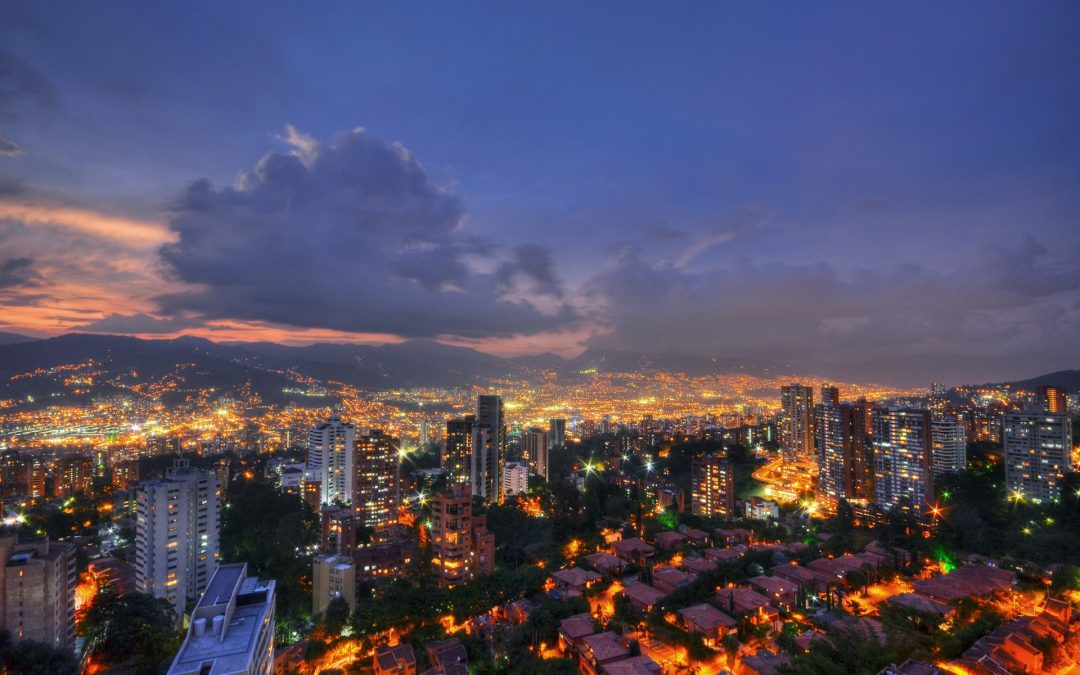Many cities in Africa, Asia and Latin America are undergoing rapid urbanisation, which brings with it significant societal challenges.
More than half the global population now live in cities[1] and by 2050, it will be nearly seven in ten[2]
Inadequate infrastructure, poor housing and inequality are all magnified when cities grow so rapidly.
And all this at a time when cities are increasingly vulnerable to the effects of climate change; a phenomenon that they also play a part contributing to.
It’s a huge challenge for planners, but there are cities that are responding with inspirational, innovative initiatives that are creating real benefits for millions of people.
Let’s take a look.
Transport in Medellin
Medellin in Colombia is home to 2.5 million people and has undergone a significant transformation since the 1990s, much of which has been enabled by an integrated transport system, designed to address widespread inequality.
By providing residents in low-income districts with better transport links to the commercial centre, they are able to access well-paying jobs to support their families, raising living standards across the city.
But creative solutions were needed, because the poorest neighbourhoods were located on steep, inaccessible mountain sides outside the city.
The answer was the Metrocable cable car system, a mode of transport more commonly seen in Alpine ski resorts, which carries 30,000 people every day from the barrios.
There are now six Metrocable lines, which are integrated with the rest of Medellín’s public transport system, which also includes overground Metro, tram and bus routes.
In some cases, it has reduced residents’ commutes from two hours to just 30 minutes.
It’s a non-polluting, affordable network that has helped bring prosperity to previously impoverished areas, with dramatic reductions in crime in neighbourhoods with Metrocable links.
Housing in Bangkok
Bangkok expanded rapidly from the 1960s through to the 1980s, but it’s growth was largely organic, with little in the way of urban planning.
Many low and middle-income families struggled to find adequate housing, so the Thai government stepped in.
Working alongside private sector partners, it moved to develop new affordable housing projects in consultation with communities, while also providing subsidised affordable loans to families so they could get mortgages.
To date, the NHA has built 700,000 homes across Thailand at hundreds of sites, with a plan to ultimately build one million homes.
The most economically vulnerable people are prioritised in the scheme, including the elderly, new parents and carers.
Sustainability in Taipei
Taipei in Taiwan has used a wide range of levers in its ongoing sustainable transformation.
As a coastal city, vulnerable to extreme weather events including heatwaves, cyclones and droughts, the threat from climate change is very real.
And its response covers everything from building regulations to behavioural science.
Solar panels are compulsory on all new buildings above a certain size, for example, while special permeable pavements have been installed to help keep streets cool and limit surface runoff during storms.
The city’s entire water infrastructure has been overhauled, replacing old leaking pipes in a move that saved 613,000 tons of wasted water every year.
An extensive tree planting scheme has improved biodiversity and air quality, while the electrification of public transport and a range of subsidies and incentives for industry is helping slash emissions.
All this has contributed to Taipei becoming the city with the lowest emissions per capita in the region.
Health in Hong Kong
Hong Kong has the longest life expectancy in the world, largely because the built environment is designed to encourage healthier lifestyles.
Though it is highly urbanised and densely populated, it has maintained excellent access to nature and the outdoors, which promotes walking.
Perhaps because the city is so cramped and homes tend to be small, green spaces in the city are well used, with people enjoying healthy activities like Tai Chi.
Excellent sanitation and clean water help too, as does the fact that Hong Kong is surrounded by ocean and land, so the local diet consists largely of fresh fish, vegetables and fruits, rather than processed foods.
The health system has adopted a proactive strategy of to prevent unhealthy lifestyles, including smoking, and public healthcare in general is free and accessible.
Happiness in San Jose
San Jose in Costa Rica isn’t a rich city, but it consistently ranks as among the happiest places to live in the world.
Public policy has been an important part of achieving this.
In 1949, Costa Rica took the unprecedented decision to disband its army and invest all the money it saved into education and health.
Higher school standards helped create a more stable and equal society, fostering opportunity for all.
Better education also helped create a stable and sustainable economy; San Jose is now a key producer of computer chips.
Costa Rican’s were quick to realise that their beautiful environment is an asset and English is widely spoken, supporting a thriving eco-tourism sector that welcomes many visitors from the United States.
Gender equality is also much better than many western countries, while life expectancy on a par with the US, thanks to high standards of healthcare.
The University of Manchester’s MSc in Global Urban Development and Planning is aimed at development professionals seeking to acquire new expertise in dealing with urban issues, with a focus on the challenges faced by growing cities in the Global South.
Find out more information about the course and how to apply here.
[1] https://www.greenpeace.org/international/story/63438/world-cities-day-2023-communities-and-movements-shaping-sustainable-cities/
[2] https://www.frontiersin.org/research-topics/53106/technology-enabled-smart-and-sustainable-cities-in-global-south

